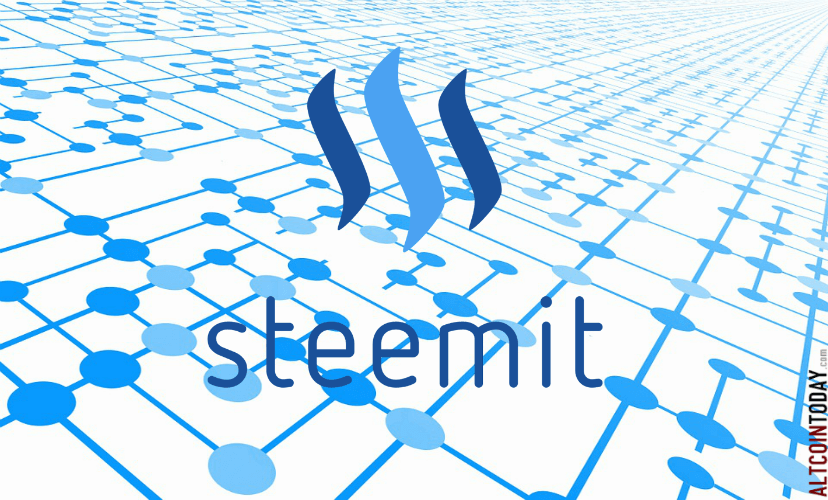
When an obscure cryptocurrency with a total market cap of approximately $14m skyrockets to over $400m, people take notice. But, when that cryptocurrency forms the backbone of a social media entity rewarding people for creating content, sometimes with thousands or tens of thousands of dollars for single posts, excitement and skepticism ensues.
Launched in March and gaining prominence in July, Steemit, a self-described “blockchain-based social media platform“, has seen this level of notoriety in just its first few months of operation. To date, it has polarized blockchain experts while winning scores of newcomers to the technology.
The brain-child of Daniel Larimer, founder of BitShares, and Ned Scott, a former financial analyst, Steemit aims to provide a place for individuals to create content, promote the content they believe is good and comment on stories — all while earning money.
But Steemit is more than just a website for earning spare change. It’s an actual blockchain built on a piece of technology developed by Larimer called Graphene, which allows for the deployment of application-specific blockchains.
Scott, in interview with CoinDesk, explained that the team only had the idea for Steemit back in January and, because of the Graphene framework, they were able to quickly roll the project out.
The rest, like most things in the blockchain space, is a bit difficult to explain how Steemit works with them.
The pop
For the first few months, there wasn’t much talk about Steemit.
While there were early miners and people contributing content, the real big bang didn’t come until 4th July. When the dam opened, $1.3m worth of stored-up blockchain-based currency called “steem” was released to those that had been participating on the platform.
Scott explained that, while all of the blog posts, comments and upvotes that had occurred on the site pre-July 4th were all on the blockchain, the rewards users had been promised for their contributions had not been distributed. The underlying idea was that the team wanted to continue testing the platform, finding bugs and fixing them prior to a rush of new people signing up.
He cautioned that, no matter how diligent the development team is, there are going to be bugs and that they wanted to ensure that Steemit was safe and secure for everyone.
Nevertheless, 4th July was a day that they had all been looking forward to.
Scott said:
“What happened on 4th July, it was like a three-month long day that finally ended. Today, the rewards pool distributes in a continuous matter. On that first day, it was sort of this moment that had been building up
And with that pop, users who had been watching their balances rise were instantly rewarded.
One currency, two smart contracts
Part of the confusion with Steemit lies in the different ways that the currency is presented to users.
At the root is the currency Steem, which is the typical transferrable, fungible, freely moveable token akin to bitcoin, ethereum or any other cryptocurrency. But that same Steem can be put into two different types of smart contracts depending on the particular utility an individual wants.
The first is called Steem Power, which provides utility and leverage. Steem Power is the backbone of an account’s voting-potential. In other words, the more Steem Power an individual has, the stronger their vote is on Steemit.
Scott explained that the team wanted to provide a mechanism by which individuals could take a long-term interest in the project, while allowing others to continue with their speculation. In the white paper, Steem Power is compared to long-term capital commitments, similar to what a venture capitalist might do.
While users can invest their money instantly, there is an expectation that it will take time to see a return on that investment.
In the case of Steem Power, should a user want to convert back to the base currency of Steem, it will need to occur in 104 weekly conversions.
The second smart contract is called Steem Dollars. This is a debt-like instrument that promises to distribute $1 worth of Steem to the token holder at some point in the future.
Scott explained:
[This is] the blockchain telling the holders of Steem Dollars that, at any point in the future, the blockchain will convert their Steem Dollars into a dollar’s worth of Steem after a seven day conversion process.
To Part - 2
#Credit
Hi! I am a robot. I just upvoted you! I found similar content that readers might be interested in:
http://www.coindesk.com/steemit-blockchain-social-media-how-works/
Downvoting a post can decrease pending rewards and make it less visible. Common reasons:
Submit
Thanks
Downvoting a post can decrease pending rewards and make it less visible. Common reasons:
Submit
Thank you for this well written, easy-to-understand post. I'm pretty new to Steemit and appreciate your time and effort in putting together this helpful info. Good resource to give to newbies. I will bookmark it. Now on to Part 2.
Downvoting a post can decrease pending rewards and make it less visible. Common reasons:
Submit